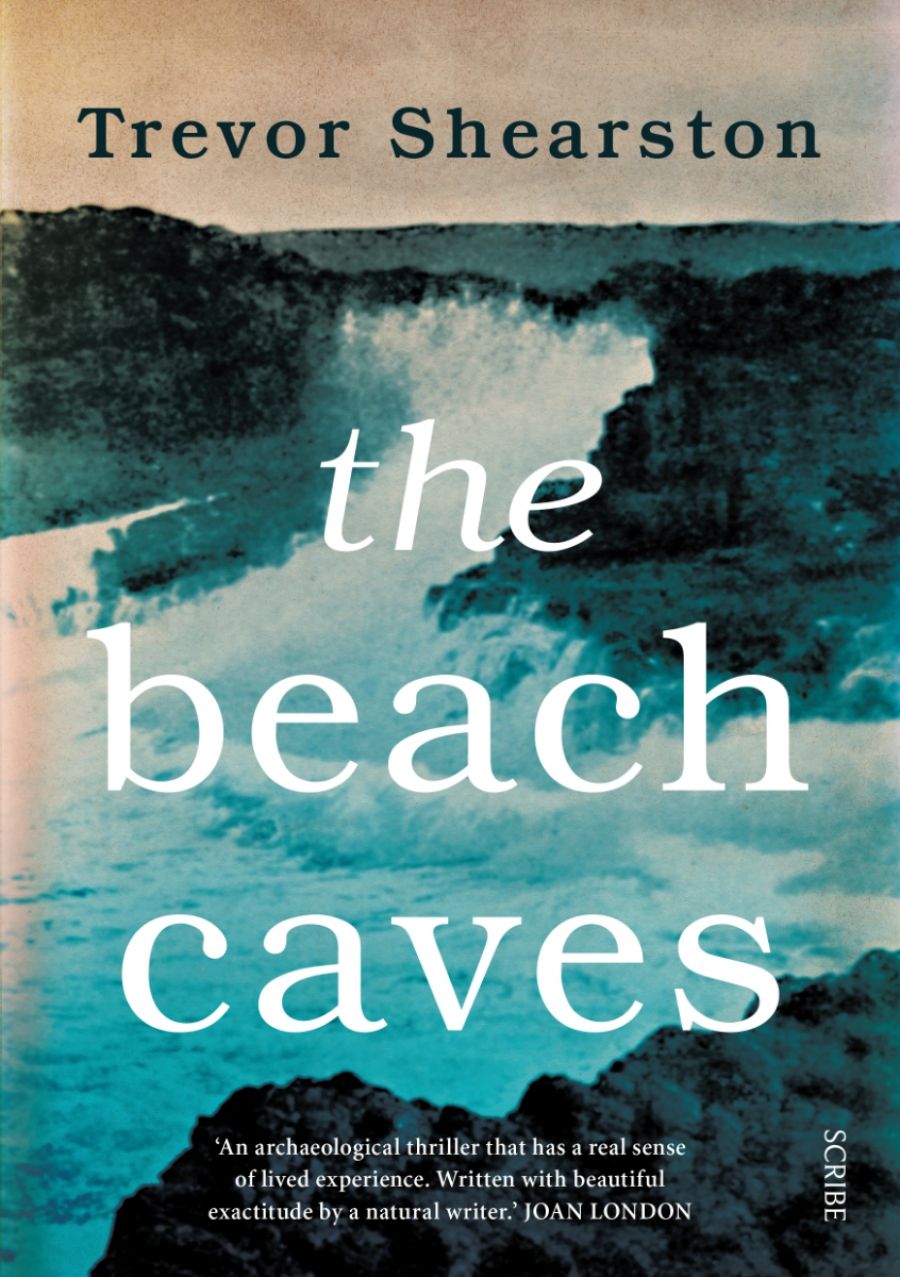
- Free Article: No
- Contents Category: Fiction
- Review Article: Yes
- Article Title: Scratching the surface
- Article Subtitle: Trevor Shearston’s new novel
- Online Only: No
- Custom Highlight Text:
At the heart of Trevor Shearston’s latest novel, The Beach Caves, is the act of digging. The protagonist, Annette Cooley, is a young archaeology student, thrilled by the allure of her Honours supervisor’s most recent find: the stone remains of an Aboriginal village on the New South Wales south coast that could rewrite the pre-European history of Australia. Intriguing additional sites are soon discovered, but before long the air of excitement is replaced by one of suspicion, jealousy, and dread when a member of the dig team disappears.
- Grid Image (300px * 250px):

- Book 1 Title: The Beach Caves
- Book 1 Biblio: Scribe, $29.99 pb, 336 pp
- Book 1 Readings Link: booktopia.kh4ffx.net/7mexMA
Annette and her best friend, Sue Klima, are invited on a field trip with Professor Aled Wray and his wife, fellow archaeologist Marilyn Herr. The first site they visit is a series of crumbling stone remains that suggest the local Aboriginal people shifted from a nomadic existence to a sedentary community on the banks of the Clyde River in a way never before imagined. Initial excavations produce academic papers that cause an immediate stir. On their second visit to the area – accompanied by a bevy of new students from different university faculties – fresh discoveries begin to overshadow even this stunning find. Within a climate of academic rivalry, Professor Wray and Dr Herr vie for control of the newly discovered sites. A relationship develops between Annette and engineering student Brian Harpur. Loyalties are tested, passions inflamed. Annette and Sue are split between two sites, each choosing to stay loyal to their respective Honours supervisors, Aled and Marilyn.
Shearston, whose earlier novel, Game (2013), following the exploits of bushranger Ben Hall, was longlisted for the Miles Franklin and shortlisted for numerous other awards, has an impeccable eye for landscape. As in his previous novel, Hare’s Fur (2019), which was set in the Blue Mountains, the reader experiences moments of transportation into the New South Wales bush.
In one of The Beach Caves’ most exciting scenes, Brian leads Annette to a discovery he has made in the hills above the beach. ‘The gully mouth was crowded with light-starved sweet pittosporum, the heads featherdusters and the stems as dense as bamboo. Annette looked doubtfully at him, and he turned and plunged in, as if swimming breaststroke.’
The theme of discovery, claims of ownership of the land, and how humans interact with place permeates Part One of The Beach Caves: ‘They didn’t talk archaeology, but about Canberra. It wasn’t a city, Marilyn agreed, but as a place to pursue an academic career it was perfect.’
Such observations prime the reader to consider the relationships between people and the places they live, and how present-day Australia relates to both the land and its First Nations peoples. That these issues are not further developed in the second part of the novel feels like a missed opportunity.
Some of this may be due to questions of genre. The Beach Caves is a difficult novel to categorise. The opening chapters excel at creating a sense of mystery and foreboding in the tradition of classic gothic novels. Characters, who all seem to be holding something back, move through shadowy landscapes as new developments pile up like artefacts on a classroom table. The pace, however, is more meditative than one expects of a thriller, mystery, or crime fiction novel. Details and twists slowly accrete as characters and relationships evolve in the manner expected of literary fiction, while the characters themselves – able to read a landscape as though it were a typewritten note yet prone to sudden blushes and telling grins – would feel more at home in a straight genre novel. Annette’s attempt to withhold potentially vital information from police investigating the disappearance of one of the dig team members – a decision on which the second part of the novel hinges – being a case in point.
Of perhaps greater concern is the way in which The Beach Caves engages with Indigenous history and the relationship between the continent’s existing cultures and the European invasion that ravaged them. ‘Who knows? Coming a hundred, even fifty years later, Cook and Banks might have found villages of stone huts at Botany Bay. And how different would our history have been then?’ muses Aled. An interesting question, but not an uncomplicated one.
While it is dangerous to transpose hypotheticals posed in a novel into the real world, it cannot go without mention that the remains of the stone huts on the New South Wales south coast that prompt this meditation are fictitious. While such structures do exist in a number of locations throughout Australia, including south-west Victoria, the Kimberly coast, and Far North Queensland, they have not been recorded in the Clyde River area.
On the other hand, the question of whether it is desirable or necessary to creatively reimagine the story of a culture that has been systemically repressed and misrepresented for more than two centuries is one that probably should be asked today. If this novel prompts readers to research the history of Aboriginal settlements for themselves, it would undoubtedly be a positive outcome, but the implications of misunderstanding the fictional ‘discoveries’ as fact would be far more complex.
The Beach Caves is a moody, evocative novel that brings the rugged south coast of New South Wales to life. But in focusing on the trials and tribulations of a group of academics and using the Indigenous cultures they are studying as little more than set dressing, one wonders whether the most intriguing finds of this novel remain beneath the surface.


Comments powered by CComment